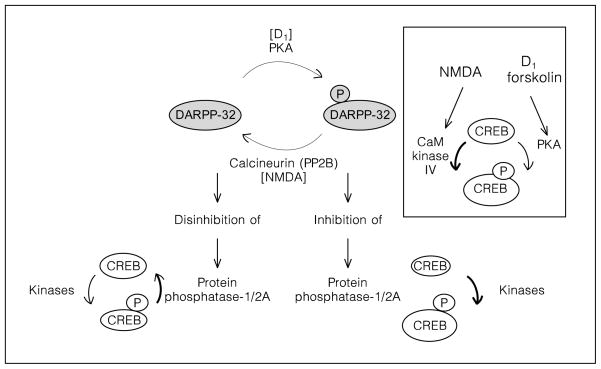Fig. 1.
Role of dopamine/cyclic AMP and NMDA/Ca2+ in the activation of protein phosphatases and dephosphorylation of 133Ser-CREB in the striatum. The level of CREB phosphorylation is determined by the relative activity of kinases and phosphatases. The phosphatases responsible for dephosphorylation of 133Ser-CREB are PP1 and PP2A [65, 66]. The DARPP-32 pathway is involved in the regulation of PP1/2A in the striatum [55]. DARPP-32 is a neuronal phosphoprotein which upon phosphorylation on 34Thr [54, 111, 112], becomes a very potent PP1/2A inhibitor [55]. Dopamine-activated PKA phosphorylates DARPP-32 on 34Thr. Therefore, dopamine and cyclic AMP activation promotes CREB phosphorylation via inhibition of phosphatase activity. Stimulation of NMDA receptors induces the calcium-dependent phosphatase calcineurin, the dephosphorylation of DARPP-32 on 34Thr, the disinhibition of PP1/2A [52, 56, 111] and the dephosphorylation of CREB [66]. Insert: CaM kinase IV activated by NMDA receptors [75, 113], and PKA activated by D1 receptors [30, 57, 60, 114] are involved in the phosphorylation of CREB on 133Ser.

